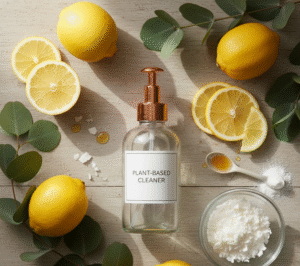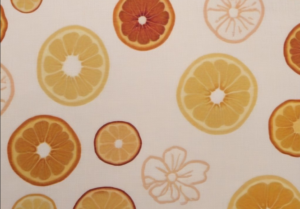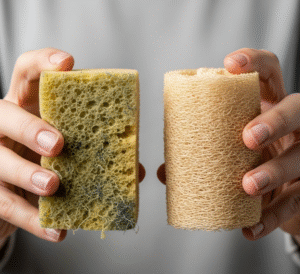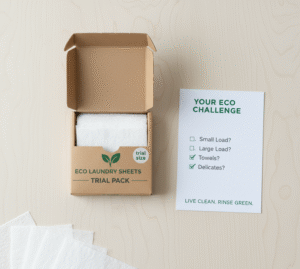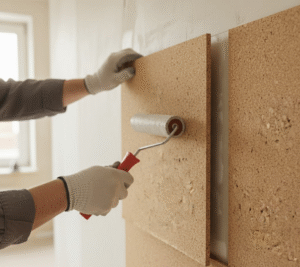The Hidden Dirt Behind ‘Clean’
You grab a wipe, swipe it across the counter, toss it. That tiny motion feels final. Done. Clean.
Except, maybe it isn’t.
Most wipes – even the “eco” ones – don’t actually go away. They drift down the drain, into pipes, into somewhere you’ll never see. Until one day, your city’s sewer system gurgles up a headline about a “fatberg.” That’s your “clean” echoing back.
A lot of what’s sold as eco-friendly cleaning wipes still hides plastic threads in the fabric. It’s a quiet kind of betrayal – neat packaging, soft green branding, and a mess waiting somewhere downstream.

Why We Fell for the ‘Disposable Convenience’ Trap
You’re late. The sink’s sticky. There’s half a coffee ring on the counter. So, one quick swipe. Easy fix.
That feeling – the speed, the satisfaction – it’s addictive. Feels like control. Like being modern. But behind that swipe, there’s a habit we never meant to form.
People didn’t use wipes for everything until marketing turned it into a lifestyle. Back then, a rag and soap did the job. Then came the shiny ads, the lemony scents, the word “sanitary” whispered just right. Suddenly, reusing cloths looked… gross.
And when the eco wave hit, brands didn’t miss a beat. “Plant-based.” “Green.” “Natural.” They changed the words, not the product.

What “Eco-Friendly” Really Means (and When It’s Just Marketing)
Here’s the tricky part – there’s no strict rule for the phrase “eco-friendly.” Anyone can use it.
If you dig into what’s inside those wipes, you’ll start seeing things like polyester or rayon blends. The kind of stuff that survives decades in landfills. And when a label says “compostable,” it usually means in an industrial facility, not your garden bin.
Real eco claims come with real certifications – EU Ecolabel, OEKO-Tex, or something you can actually verify. If the label sounds like a yoga retreat (“Earth Balance Certified”), probably skip it.
People who’ve tried every “green” wipe out there often say the same thing: the texture gives it away. Feels too slick, too smooth. That’s the synthetic fiber, hiding in plain sight.
Inside the Science: How Biodegradable Wipes Break Down (or Don’t)
Here’s where the marketing fluff hits physics.
For something to be biodegradable, microbes have to eat it – literally digest it into harmless bits like water or CO₂. Compostable means it breaks down fast under heat and moisture. None of that happens inside your bathroom trash can.
Tests show many so-called “flushable” wipes use PET – the same plastic bottles are made from (research on wipe degradation). You can guess what happens next.
It doesn’t rot. It just sits.
Landfills? No oxygen, no bacteria. Sewers? Too cold, too wet. Compost piles? They reject synthetics. So the “biodegradable” promise ends up just being a line on a label.

The Microplastic Problem No One Wants to Talk About
Tiny things, huge mess.
Every wipe, even the “good” ones, sheds little fibers. They go down the drain, slip through filters, and travel farther than most of us will ever go. Rivers, fish, salt, even rain – they find their way back.
A recent report pointed out that many household wipes, “eco” or not, leak microplastics that end up in seafood and table salt. Kinda ruins the appetite.
Plenty of people who compost at home notice the same thing – tiny threads left behind months later. They’re invisible at first, then glint under sunlight. And that’s how you realize your “eco” wipe wasn’t so natural after all.

The Genuine Alternatives: What Actually Works
Let’s be honest – nobody’s giving up convenience completely. But there’s a middle ground.
The real eco-friendly cleaning wipes aren’t “miracle” anything. They’re just honest. Bamboo, cotton, wood pulp – materials that actually return to the earth.
Or go simpler: cloth. Old T-shirt squares. Microfiber if you wash them right. A spray bottle of vinegar and lemon oil. Done.
I’ve met people who said switching to reusable cloths felt weird at first – like rewinding life a few decades. Then it became second nature. Less waste, less guilt, and somehow, a cleaner kitchen.
Change starts as an experiment. Then it turns into relief.

The Ripple Effect of Small Changes
One small act ripples.
You change a habit, a few others follow. Brands notice. Cities notice. Suddenly there’s talk about banning wipes with plastic or forcing better labeling. It sounds slow – until it isn’t.
I once saw a local plumber post a photo of a clogged drain made entirely of “biodegradable” wipes. People started tagging brands. Within months, the packaging changed. That’s how pressure works – one kitchen at a time.
Every purchase is a vote. Even the small ones.
Before You Buy: The Eco Wipes Checklist
If you’re going to buy them anyway, here’s a quick gut check:
- At least 90% natural fiber.
- No polyester, polyethylene, or polypropylene hiding inside.
- Real certifications, not made-up “eco” seals.
- Packaging that actually recycles.
- Disposal info that makes sense for your city.
Before you toss that pack into your cart, pause. Ask yourself – is this wipe really cleaning your space, or just making a mess you’ll never see?
